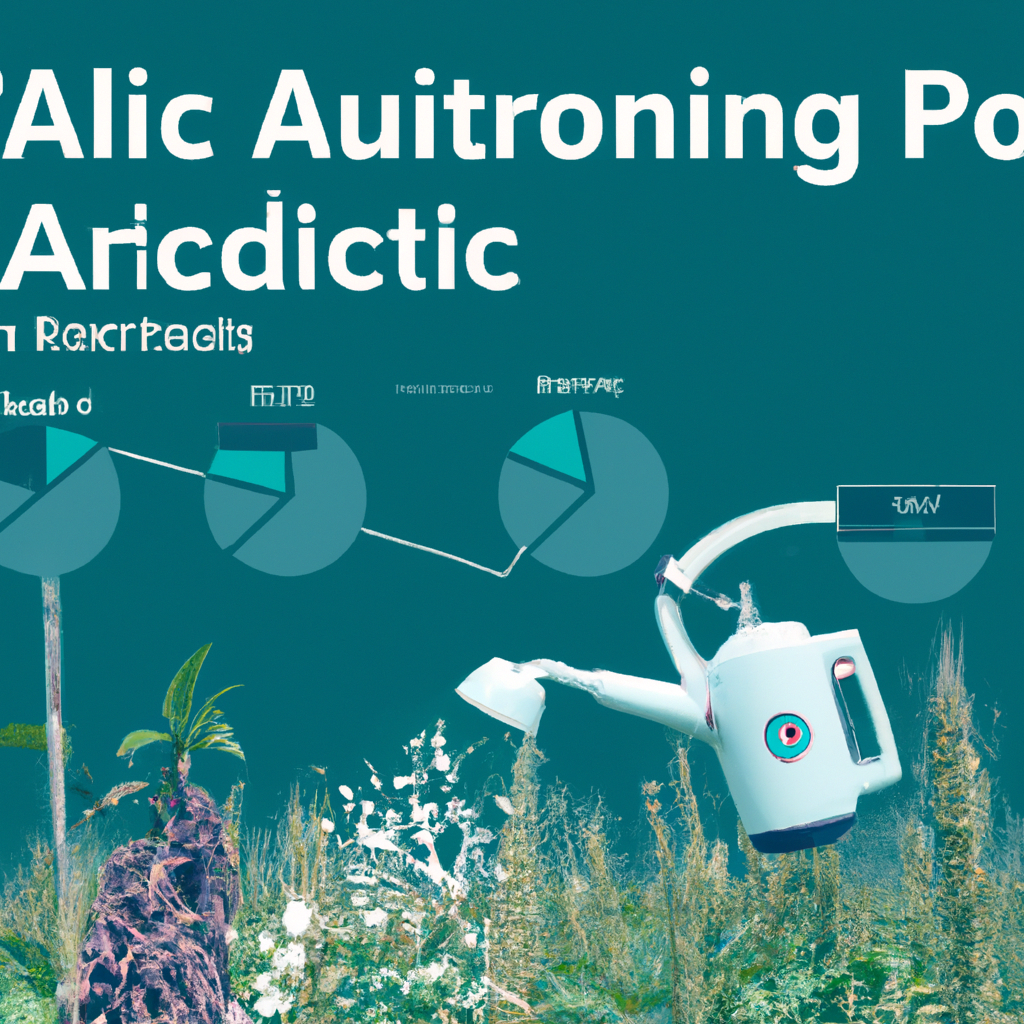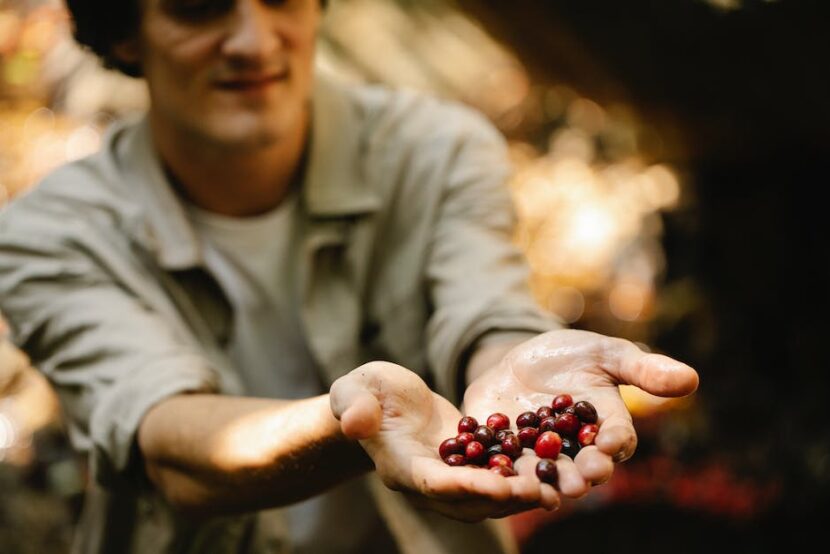-
Table of Contents
- Introduction
- Exploring the Benefits of AI-Powered Precision Agriculture for Crop Yields
- How AI Tools are Helping Farmers Monitor and Manage Soil Health
- The Role of AI in Automating Agricultural Tasks and Increasing Efficiency
- Leveraging AI to Improve Crop Disease Detection and Prevention
- Utilizing AI to Enhance Livestock Management and Animal Welfare
- Conclusion
with AI Tools.
Introduction
The use of Artificial Intelligence (AI) tools in agriculture is revolutionizing the way farmers grow crops and manage their land. AI tools are being used to improve crop yields, reduce costs, and increase food production. AI tools can help farmers make better decisions about when to plant, when to irrigate, and when to harvest. AI tools can also help farmers identify and address problems such as pests, weeds, and diseases. AI tools can also be used to monitor soil health, water usage, and other environmental factors. By using AI tools, farmers can increase their yields and reduce their costs, while also improving the quality of their crops. AI tools are also being used to improve the efficiency of food production, from farm to table. AI tools can help farmers optimize their production processes, reduce waste, and increase the shelf life of their products. AI tools are helping to revolutionize the way farmers grow crops and manage their land, and are helping to ensure a more sustainable and secure food supply.
Exploring the Benefits of AI-Powered Precision Agriculture for Crop Yields
As the world’s population continues to grow, so does the need for more efficient and sustainable agricultural practices. Fortunately, advances in technology are making it possible to increase crop yields while reducing the environmental impact of farming. One of the most promising developments in this area is the use of AI-powered precision agriculture.
Precision agriculture is a farming technique that uses technology to monitor and manage crops in a more precise and efficient way. By using sensors, drones, and other data-gathering tools, farmers can collect detailed information about their crops and the environment in which they are grown. This data can then be used to make informed decisions about how to best manage the crops for maximum yield.
AI-powered precision agriculture takes this concept one step further. By using artificial intelligence, farmers can analyze the data they collect and make decisions about how to best manage their crops. AI can help farmers identify areas of their fields that need more attention, such as areas that are prone to disease or pests. It can also help them optimize irrigation and fertilizer use, as well as identify the best times to plant and harvest.
The benefits of AI-powered precision agriculture are numerous. By using AI to make decisions about crop management, farmers can save time and money, as well as reduce their environmental impact. AI can also help farmers increase their yields by optimizing their crop management practices. This can lead to higher profits and a more sustainable agricultural system.
Overall, AI-powered precision agriculture is a promising development for the future of farming. By using AI to make informed decisions about crop management, farmers can increase their yields while reducing their environmental impact. This technology has the potential to revolutionize the way we farm and could be a key factor in ensuring food security for future generations.
How AI Tools are Helping Farmers Monitor and Manage Soil Health
As farmers strive to increase crop yields and reduce their environmental impact, they are turning to artificial intelligence (AI) tools to help them monitor and manage soil health. AI tools can provide farmers with real-time data on soil conditions, helping them make informed decisions about how to best care for their land.
AI tools can help farmers monitor soil health in a variety of ways. For example, AI-powered sensors can be used to measure soil moisture, temperature, and nutrient levels. This data can be used to identify areas of the field that need more water or fertilizer, or to detect potential problems such as soil compaction or nutrient deficiencies.
AI tools can also be used to detect pests and diseases. By analyzing images of crops, AI algorithms can detect signs of pests or diseases before they become visible to the human eye. This can help farmers take action quickly to prevent crop damage.
AI tools can also be used to optimize irrigation and fertilizer applications. By analyzing data on soil conditions, AI algorithms can determine the optimal amount of water and fertilizer needed for each area of the field. This can help farmers save money by reducing the amount of water and fertilizer they use.
Finally, AI tools can be used to predict future crop yields. By analyzing data on soil conditions, weather patterns, and crop growth, AI algorithms can predict how much a crop will yield in the future. This can help farmers plan ahead and make decisions about what crops to plant and when.
AI tools are revolutionizing the way farmers monitor and manage soil health. By providing real-time data on soil conditions, AI tools can help farmers make informed decisions about how to best care for their land. This can help farmers increase crop yields and reduce their environmental impact.
The Role of AI in Automating Agricultural Tasks and Increasing Efficiency
AI (Artificial Intelligence) is revolutionizing the agricultural industry, making it more efficient and productive. AI-powered technologies are helping farmers automate tedious tasks, reduce costs, and increase yields.
AI-powered robots are being used to automate tasks such as weeding, planting, and harvesting. These robots are equipped with sensors and cameras that allow them to detect and identify weeds, pests, and other obstacles. They can then take action to remove the weeds or pests, or to avoid them. This automation reduces the need for manual labor, saving time and money.
AI-powered drones are also being used to monitor crops and soil conditions. They can detect changes in soil moisture, temperature, and nutrient levels, and can provide farmers with real-time data about their crops. This data can be used to optimize irrigation and fertilization, leading to higher yields and lower costs.
AI-powered analytics are also being used to analyze data from sensors, drones, and other sources. This data can be used to identify trends and patterns, and to make predictions about future crop yields. This helps farmers make informed decisions about planting, harvesting, and other activities.
Overall, AI is playing an increasingly important role in the agricultural industry. It is helping farmers automate tedious tasks, reduce costs, and increase yields. As AI technology continues to improve, it will become even more useful in helping farmers maximize their efficiency and productivity.
Leveraging AI to Improve Crop Disease Detection and Prevention
As farmers around the world face the challenge of increasing crop yields while dealing with the threat of disease, artificial intelligence (AI) is emerging as a powerful tool to help them meet this challenge. AI can be used to detect and prevent crop diseases, allowing farmers to take proactive steps to protect their crops and maximize their yields.
AI-based crop disease detection systems use computer vision and machine learning algorithms to identify and classify diseases in crops. By analyzing images of crops, these systems can detect signs of disease, such as discoloration, wilting, and other visual cues. This allows farmers to quickly identify and address potential problems before they become serious.
AI-based crop disease prevention systems use predictive analytics to anticipate and prevent disease outbreaks. By analyzing historical data, these systems can identify patterns and trends that can be used to predict when and where diseases are likely to occur. This allows farmers to take preventive measures, such as applying fungicides or adjusting irrigation schedules, to reduce the risk of disease outbreaks.
In addition to helping farmers detect and prevent crop diseases, AI can also be used to optimize crop production. AI-based systems can analyze data from sensors and other sources to identify areas of the field that need more or less water, fertilizer, or other inputs. This can help farmers maximize their yields while minimizing their costs.
AI is revolutionizing the way farmers manage their crops, and it is clear that it has the potential to make a significant impact on crop disease detection and prevention. By leveraging AI, farmers can take proactive steps to protect their crops and maximize their yields.
Utilizing AI to Enhance Livestock Management and Animal Welfare
The use of artificial intelligence (AI) in livestock management and animal welfare is becoming increasingly popular. AI can help farmers and ranchers better manage their herds, improve animal welfare, and increase efficiency.
AI can be used to monitor the health and wellbeing of animals. Sensors can be placed on animals to track their movements, health, and behavior. This data can be used to detect signs of illness or distress, allowing farmers to intervene quickly and provide the necessary care. AI can also be used to monitor the environment, such as temperature and humidity, to ensure the animals are living in optimal conditions.
AI can also be used to improve the efficiency of livestock management. AI-powered systems can be used to automate tasks such as feeding, watering, and milking. This can help reduce labor costs and improve the overall efficiency of the farm. AI can also be used to optimize breeding programs, helping farmers select the best animals for breeding and ensuring the healthiest offspring.
AI can also be used to improve animal welfare. AI-powered systems can be used to detect signs of distress or pain in animals, allowing farmers to intervene quickly and provide the necessary care. AI can also be used to monitor the environment, such as temperature and humidity, to ensure the animals are living in optimal conditions.
The use of AI in livestock management and animal welfare is becoming increasingly popular. AI can help farmers and ranchers better manage their herds, improve animal welfare, and increase efficiency. By utilizing AI, farmers can ensure their animals are healthy and living in optimal conditions, while also improving the efficiency of their operations.
Conclusion
In conclusion, AI tools have the potential to revolutionize the agricultural industry by improving crop yields and food production. AI-driven technologies such as precision agriculture, machine learning, and robotics can help farmers increase yields, reduce costs, and improve the quality of their products. AI tools can also help farmers make better decisions about when and how to use resources, such as water and fertilizer, to maximize their yields. With the right implementation, AI tools can help farmers increase their yields and improve the quality of their products, while also reducing their environmental impact.





